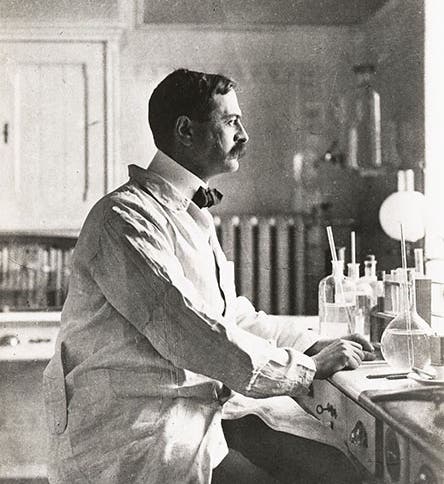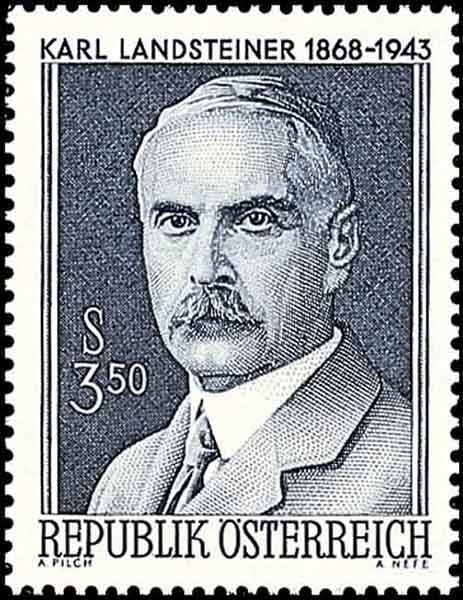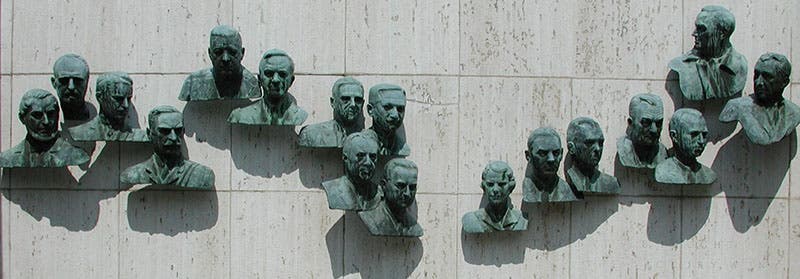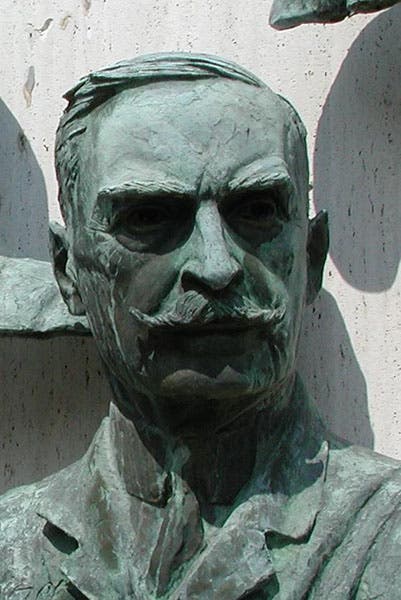Scientist of the Day - Karl Landsteiner
Karl Landsteiner, an Austrian physician, pathologist, and virologist, was born June 14, 1868. Until he was 54 years old, he worked in Vienna, primarily at the Institute for Pathological Anatomy, where he had the title of Prosector ("he who dissects for demonstration"). But his two great discoveries were in immunology and virology. In 1900, he discovered that all human blood is not alike – that blood mixed from two donors will often agglutinate. In 1901, he was able to identify three major human blood types, which he called A, B, and C. He correctly concluded that type A has antigens that react with the antibodies of type B, and vice versa, and that C has no antigens. His type C is now our type O. The next year, it was discovered that there is a fourth type, with both A and B antigens, and this is now type AB. Landsteiner and his students worked out how to determine human blood type by testing. This made it possible, for the first time, to safely transfuse blood from one human to another. The first transfusion was performed in 1907, as a direct result of Landsteiner's work. Much later, after he had moved to the Rockefeller Institute in New York in 1922, he would receive the 1930 Nobel Prize in Medicine/Physiology for the discovery of human blood types. Still later, he would discover another major human blood group system, involving the Rhesus factor, which made blood transfusion even safer.
Landsteiner's other major achievement was the isolation of the virus that causes poliomyelitis. This was accomplished with a colleague, Erwin Popper, in 1909. It would be many years before this discovery would bear immunological fruit, but there would have been no Salk vaccine without Landsteiner's discovery. As one who contracted polio in my youth, before there was a Salk vaccine, and who fortunately recovered, I have a warm spot in my heart for those who have helped eliminate the many childhood diseases that have long plagued humankind. I never had to go through with my children what my parents had to endure with me and my sister, and for that I am forever grateful to Landsteiner and Salk and the dozen or so others who contributed to the eventual near-elimination of this cruel disease.
If Landsteiner enjoyed life and his success as a research physician, his portraits do not show it. I looked all over for a smiling Dr. Karl, but did not find one. The image on the postage stamp issued in Austria in 1968 has been softened from the original photo, which I find appealing (second image, above), and there also exists a photo showing a younger Landsteiner in a less than solemn mood (first image, above), so I chose those two to include here. If you would like a more serious Landsteiner, those photos are not hard to find; the one that illustrates the Nobel Prize biographical statement is the best of the lot.
There is a Polio Hall of Fame in Warm Springs, Georgia that features bronze busts of all the important figures in polio research (it is actually a Wall of Fame – there is no hall in sight – but I will use their term). The busts were sculpted by Edmond Romulus Amateis; we show the complete wall above. The four individuals at left are the four European pioneers, with Landsteiner being the fourth of those. The other researchers – 11 of them – were all Americans, and Franklin D. Roosevelt and the president of the polio foundation were included at far right as well. We also show you a close-up view of Landsteiner’s bust (fourth image, below), and you will see that the sculptor had no more luck finding an amiable iconotype than I did. I suppose I should not dwell on Landsteiner’s dour appearance – there is nothing wrong with being deadly serious about life and work – but we do like our heroes to look like they are enjoying themselves, even though it is really none of our business.
Five years ago on this day, Landsteiner was the subject of a Google Doodle, which you can see in its animated format here. He is shown as a white-haired researcher in the doodle, although Landsteiner was 32 years old when he discovered the human blood groups.
Dr. William B. Ashworth, Jr., Consultant for the History of Science, Linda Hall Library and Associate Professor emeritus, Department of History, University of Missouri-Kansas City. Comments or corrections are welcome; please direct to ashworthw@umkc.edu.






![“Aurora Borealis,” hand-colored wood engraving by Josiah Wood Whymper, [Natural Phenomena], plate 2, 1846 (Linda Hall Library)](https://assets-us-01.kc-usercontent.com:443/9dd25524-761a-000d-d79f-86a5086d4774/0245ffcb-b70c-477c-8792-0a73ebd54eb2/Whymper%2011.jpg?w=210&h=210&auto=format&fit=crop)


